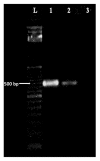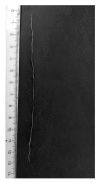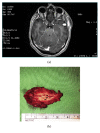The Diversity of Human Dirofilariasis in Western Sri Lanka
- PMID: 31139659
- PMCID: PMC6500613
- DOI: 10.1155/2019/9209240
The Diversity of Human Dirofilariasis in Western Sri Lanka
Abstract
Background: Human dirofilariasis is an emerging zoonosis in many countries. Dirofilariasis caused by Dirofilaria repens may present with diverse clinical manifestations in humans due to aberrant localization of worm lesions causing diagnostic dilemmas. The aim of this retrospective study was to describe and update the demography and clinical spectrum of human dirofilariasis in western Sri Lanka. Nematode or nematode fragments isolated from excision biopsies that were confirmed as D. repens at the Department of Parasitology, Faculty of Medicine, University of Kelaniya, Sri Lanka, between 2012 and 2018 were included. Data on age, gender, and clinical details were obtained from case files. Identity of worms was established by morphometry and cuticle characteristics on wet-mount preparation. Specimens from unusual case presentations were further analyzed by PCR with specific primers for internal transcribed spacer region 2 (ITS2) of the ribosomal DNA.
Results: Sixteen nematode specimens isolated from subconjunctiva (n=2), subcutaneous (n=13) and intramuscular (n=1) locations were identified as D. repens by morphometry (average length 11.5 cm) and the characteristic longitudinal striations on cuticle visualized by microscopy. The age distribution of cases ranged from 1 to 65 years with a mean of 21.5. Females were more frequently affected (n=10, 62.5%) and worm locations were commonest in the orbital region (5/16) and scrotum (3/16). Imaging techniques were of use in detecting infections in deeper tissue levels. PCR analysis of DNA extracted from a worm in an intramuscular granuloma of the temporal region elicited the expected band at 484bp for D. repens.
Conclusions: Human dirofilariasis is on an upward trend in incidence. Imaging techniques were of use in clinical diagnosis and molecular speciation in establishing the species identity in unusual case presentations. We suggest a more conservative approach in the management of human dirofilariasis and recommend a one health approach for control.
Figures




References
-
- Pampiglione S., Canestri Trotti G., Rivasi F. Human dirofilariasis due to Dirofilaria (Nochtiella) repens: a review of world literature. Parassitologia. 1995;37(2-3):149–193. - PubMed
-
- Cancrini G., Kramer L. Insect vectors of Dirofilaria spp. In: Simon F., Genchi C., editors. Heartworm Infection in Humans and Animals. Spain: Ediciones Universidad de Salamanca; 2001. pp. 63–82.
MeSH terms
LinkOut - more resources
Full Text Sources

